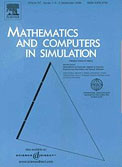Hlinakova P, Dostalova T, Danek J, Nedoma J, Hlavacek I. Mathematics and Computers in Simulation 2010; 80(6); 1256–1268; IF: 0.930

Abstract:
Detailed knowledge about the function and morphology of temporomandibular joint are necessary for clinical applications and for analyses of the function of temporomandibular joint prosthesis. Movements of temporomandibular joint are biomechanically sophisticated and are up-to-date not clear. Therefore, the aim of the paper is to give the suitable mathematical approach for analyses of temporomandibular joint. In the paper the analysis of the temporomandibular joint, loaded by traction and compression forces, is presented and shortly discussed. The obtained results, based on two- and three-dimensional mathematical models, represent an introductory work for further studies of biomechanical aspects of temporomandibular joint and of its artificial replacements. The models are based on the theory of contact problems in linear elasticity. For the numerical solutions of the investigated problems the FEM approaches are used and the used algorithm is based on an active-set method for quadratic programming.
-mk-
